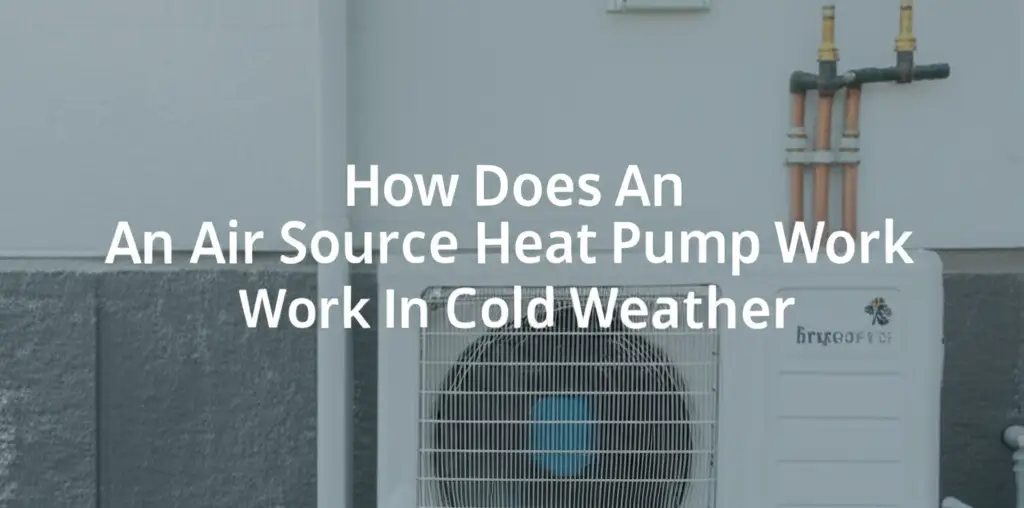· Kianna Connelly · Home Heating & HVAC · 20 min read
How To Make Heat Pump More Efficient In Winter

Maximize Your Heat Pump’s Winter Efficiency
Winter brings a unique challenge for home heating systems. Heat pumps, while energy-efficient, can struggle in very cold temperatures. You want your home to stay warm and comfortable without high energy bills. Improving your heat pump’s efficiency during winter is possible. This article will show you practical steps to achieve that goal.
We will explore proper maintenance, thermostat settings, and home improvements. You will learn how to prepare your system for the colder months. We will also cover common issues and advanced solutions. My goal is to help you keep your heat pump running smoothly and cost-effectively all winter long.
Takeaway
- Regular maintenance, like cleaning coils and changing filters, boosts heat pump efficiency.
- Smart thermostat use, including small temperature adjustments, prevents auxiliary heat overuse.
- Sealing your home and improving insulation stops heat loss, helping your heat pump work less.
- Addressing issues like defrost cycles and proper sizing ensures consistent winter performance.
Concise Answer
To make your heat pump more efficient in winter, prioritize regular maintenance, optimize thermostat settings to minimize auxiliary heat use, ensure your home is well-sealed and insulated, and address common cold-weather operational issues promptly. These steps reduce energy consumption and improve heating performance.
Understanding Winter Heat Pump Challenges
Heat pumps operate by moving heat, not by creating it. In winter, they extract heat from the outside air and transfer it inside your home. As outside temperatures drop, there is less heat available for the pump to extract. This makes the system work harder to gather enough heat. The colder it gets, the lower the heat pump’s Coefficient of Performance (COP) becomes. This means it uses more electricity for each unit of heat delivered.
Heat pumps also face issues like ice buildup on the outdoor unit in cold, humid conditions. The system enters a defrost cycle to remove this ice. During defrost, the unit briefly reverses operation, pulling heat from your home to warm the outdoor coil. This can feel like a cold draft inside. Auxiliary heat often kicks in during defrost cycles or when temperatures are too low for the heat pump alone. Auxiliary heat, typically electric resistance heating, uses much more energy than the heat pump. Understanding these challenges helps you take steps to lessen their impact and improve efficiency.
How Heat Pumps Work in Cold
Heat pumps use a refrigerant to absorb heat. This refrigerant flows between indoor and outdoor coils. In winter, the outdoor coil absorbs heat from the chilly air. Even air below freezing contains some heat energy. The compressor then increases the temperature and pressure of this refrigerant. The superheated refrigerant moves to the indoor coil. Here, it releases its heat into your home’s air. The cooled refrigerant then cycles back outside to collect more heat. This process continues, providing warmth.
Why Efficiency Drops with Temperature
When outdoor temperatures fall significantly, the temperature difference between the refrigerant and the outside air shrinks. This makes it harder for the outdoor coil to absorb heat efficiently. The compressor has to work much harder to raise the refrigerant’s temperature to a level sufficient for home heating. This increased effort uses more electricity. Furthermore, the frequency of defrost cycles increases in colder, often damp, conditions. Each defrost cycle temporarily reduces the heat pump’s heating output and often triggers the more energy-intensive auxiliary heat. These factors combine to lower overall efficiency and increase operating costs.
Regular Maintenance for Peak Efficiency
Regular maintenance is vital for your heat pump’s efficiency, especially in winter. Think of it like tuning up your car before a long trip. A well-maintained heat pump operates smoothly and uses less energy. Neglecting maintenance can lead to reduced performance, higher utility bills, and even system breakdowns. I always make sure my system gets a professional check-up before the heating season starts. This simple step can save you a lot of trouble and money.
Maintaining your heat pump involves a few key areas. You need to keep the coils clean. You also must change air filters regularly. Professional technicians should inspect your system yearly. These actions ensure all components work correctly. They help your heat pump deliver consistent, efficient heat throughout the winter.
Clean Heat Pump Coils
Dirty coils are a major efficiency killer. Both the indoor and outdoor coils need to be clean. The outdoor coil gathers dust, leaves, and debris. This debris acts as an insulator, preventing the coil from absorbing heat effectively from the outside air. Inside, the evaporator coil can accumulate dust and dirt. This hinders its ability to release heat into your home. A clean coil allows for better heat transfer, meaning your heat pump works less to achieve the desired temperature. I always check the outdoor unit for blockages. Keeping the coils clean ensures optimal heat exchange. For detailed steps on cleaning, you can refer to resources like how to clean heat pump coils.
Change Air Filters Regularly
Your heat pump’s air filter traps dust, pollen, and other airborne particles. A dirty filter restricts airflow. This forces your heat pump to work harder to pull air through the system. Restricted airflow reduces efficiency and can damage the fan motor over time. I try to check my filter monthly, especially during peak heating season. If it looks dirty, I replace it immediately. Generally, filters should be changed every 1-3 months. A clean filter ensures proper airflow, which is critical for efficient operation. This simple task significantly impacts your system’s performance and longevity.
Schedule Professional Servicing
Beyond what you can do yourself, professional servicing is essential. An HVAC technician can perform a thorough inspection and tune-up. They check refrigerant levels, electrical connections, and fan motors. They can identify minor issues before they become major problems. A professional can also clean hard-to-reach parts and ensure all components are calibrated correctly for winter operation. I schedule my heat pump service every fall. Regular professional servicing helps extend the life of your unit. It also ensures it runs at its highest efficiency. For guidance on how often your system needs professional attention, consider reading how often should an air source heat pump be serviced.
Optimizing Your Thermostat Settings
Your thermostat is the command center for your heat pump. How you use it greatly affects your system’s efficiency in winter. Many people set a high temperature and forget it. This can lead to excessive use of auxiliary heat. Smart thermostat settings can save a lot of energy. My goal is always to keep my home comfortable while minimizing energy waste. Small adjustments can make a big difference in your utility bills.
Understanding how your thermostat interacts with your heat pump is key. It helps you avoid inefficient operation. This is especially true for managing auxiliary heat, which can quickly drive up costs. Proper thermostat use focuses on consistent temperatures and smart setbacks.
Use Programmable or Smart Thermostats
Programmable or smart thermostats are powerful tools for efficiency. They allow you to set different temperatures for different times of the day. You can lower the temperature when you are away or asleep. Raising it just before you return or wake up provides comfort. Smart thermostats learn your habits and adjust automatically. Some even connect to weather forecasts. This lets them pre-heat your home more efficiently. I use a smart thermostat to create a heating schedule. This prevents wasted energy when no one is home.
Avoid Large Temperature Setbacks
While setting back the temperature is good, avoid large drops. Heat pumps are most efficient when maintaining a steady temperature. A significant drop, like more than 2-3 degrees, can cause the heat pump to struggle to recover quickly. This often triggers the auxiliary heat to kick in. Auxiliary heat uses a lot of electricity. Instead of dropping the temperature by 5-10 degrees, aim for smaller setbacks. A 2-3 degree setback for a few hours is usually fine. This helps the heat pump maintain efficiency without relying on costly backup heat.
Manage Auxiliary Heat Wisely
Auxiliary heat comes on when the heat pump cannot meet the demand. This happens in very cold weather or during large temperature changes. Many thermostats have a “setback recovery” feature. This feature can turn on auxiliary heat too soon to reach a target temperature quickly. You can adjust the “swing” or “differential” settings on some thermostats. This tells the heat pump to work harder before engaging auxiliary heat.
I always monitor my system to see when auxiliary heat engages. Excessive use of auxiliary heat is a common reason for high winter bills. For more information on how heat pumps and auxiliary heat interact, review resources like does heat pump shut off when auxiliary heat is on. Understanding this interaction helps you prevent unnecessary energy consumption.
Sealing Your Home for Heat Pump Performance
Even the most efficient heat pump cannot warm a leaky home effectively. A well-sealed and insulated home holds heat better. This means your heat pump does not have to work as hard to maintain a comfortable temperature. I have seen firsthand how much energy is wasted through drafts and poor insulation. Fixing these issues is crucial for winter efficiency. It reduces the demand on your heat pump. This lowers your energy bills and makes your home more comfortable.
Sealing your home involves addressing common points of heat loss. This includes windows, doors, and walls. It also includes the attic and crawl spaces. These improvements create a tighter building envelope. This keeps the warm air inside where it belongs.
Seal Air Leaks and Drafts
Air leaks are like holes in a bucket. Warm air escapes, and cold air seeps in. Common culprits include gaps around windows and doors. They also include electrical outlets, light fixtures, and plumbing penetrations. Use caulk to seal small cracks and openings. Apply weatherstripping around doors and windows. I often do a simple “draft test” with a lit incense stick. If the smoke wavers, there is a leak. Sealing these leaks is a low-cost, high-impact way to improve efficiency. It stops your heat pump from constantly fighting against incoming cold air.
Improve Window and Door Efficiency
Windows and doors are significant sources of heat loss. Old, single-pane windows let a lot of heat escape. Consider upgrading to energy-efficient windows. Double or triple-pane windows with low-emissivity (Low-E) coatings are best. If replacement is not an option, use heavy curtains or thermal blinds. These add an extra layer of insulation. For doors, ensure they fit tightly in their frames. Add door sweeps to prevent drafts under the door. I put up heavy curtains in my living room. They help keep the warmth in, especially at night. These improvements reduce the workload on your heat pump.
Add Insulation to Walls, Attic, and Floors
Insulation acts as a barrier to heat flow. More insulation means less heat escapes from your home in winter. Focus on the attic first, as most heat rises and escapes through the roof. Ensure your attic has adequate insulation levels for your climate zone. Walls and floors can also benefit from added insulation. Blown-in insulation can be added to existing walls. Insulating floors above unheated basements or crawl spaces is also beneficial. Proper insulation helps maintain a stable indoor temperature. This lets your heat pump operate for shorter periods. It also prevents it from running at maximum capacity constantly. This directly impacts efficiency and heating costs.
Ensuring Proper Heat Pump Sizing and Installation
The performance of your heat pump in winter begins with its initial setup. Proper sizing and installation are critical for efficiency. An undersized unit will struggle to heat your home. It will run constantly and likely rely heavily on auxiliary heat. An oversized unit cycles on and off too frequently. This wastes energy and puts more wear on components. My experience shows that getting the right size is paramount. It affects both comfort and operating costs.
A professional HVAC contractor should determine the correct size for your home. They consider factors like climate, home insulation, window efficiency, and air leakage. They perform a load calculation. This calculation ensures your heat pump matches your home’s heating needs. A well-designed system runs efficiently for many years.
Importance of Correct Sizing
Many homeowners do not realize how crucial proper sizing is. A heat pump that is too small cannot provide enough heat on the coldest days. This means your auxiliary heat will run excessively. Your energy bills will soar. Your home might still feel cold. On the other hand, a heat pump that is too large will “short cycle.” This means it turns on, heats up quickly, and then turns off. Constant starting and stopping uses more energy than continuous operation. It also leads to uneven temperatures and increased wear on the compressor. I always recommend getting a load calculation. This prevents these common sizing mistakes. For more on determining your unit’s size, you can read how to tell what size heat pump i have.
Professional Installation Benefits
Beyond sizing, proper installation is key. A qualified technician ensures all components are correctly connected and calibrated. This includes refrigerant lines, electrical wiring, and ductwork. Incorrect refrigerant charge, for instance, can drastically reduce efficiency. Leaky or poorly designed ductwork can lose significant heat. A professional installer will:
- Perform accurate load calculations: They use industry-standard methods to size the unit correctly.
- Ensure proper refrigerant charge: Too much or too little refrigerant hurts efficiency.
- Install and seal ductwork correctly: This prevents heat loss through leaks.
- Calibrate the thermostat and system controls: This ensures smooth operation and proper auxiliary heat lockout settings.
A quality installation means your heat pump runs as designed. It delivers maximum efficiency and comfort throughout its lifespan. It also reduces the likelihood of breakdowns during the coldest parts of winter.
Addressing Common Heat Pump Issues in Cold Weather
Even with proper maintenance and sizing, heat pumps can encounter specific issues in cold weather. Understanding these common problems helps you act quickly. Addressing them prevents efficiency loss and keeps your home warm. Some issues are normal operational aspects. Others indicate a need for troubleshooting. My aim is always to recognize these signs early. Early detection prevents minor issues from becoming major, costly repairs.
These issues often relate to the heat pump’s ability to extract heat or manage ice. Knowing what to look for allows you to intervene or call a professional. This ensures your heat pump remains efficient, even when temperatures drop significantly.
Understanding the Defrost Cycle
The defrost cycle is a normal and necessary function of your heat pump in winter. When outdoor temperatures are near freezing and humidity is high, ice can form on the outdoor coil. This ice acts as an insulator, blocking heat absorption. The heat pump’s sensors detect this ice buildup. It then initiates a defrost cycle. During defrost, the system temporarily switches to cooling mode. It sends warm refrigerant to the outdoor coil to melt the ice. This process usually lasts 5-15 minutes. It can cause a temporary cold draft inside. The auxiliary heat often kicks in during this time to compensate. This is normal. If defrost cycles are too frequent or last too long, it might signal an issue. This could be a faulty sensor or low refrigerant.
Preventing Ice Buildup and Blockages
While defrost cycles are normal, you can help prevent excessive ice buildup. Keep the area around the outdoor unit clear. Remove snow, leaves, or other debris. Ensure nothing blocks airflow to the coils. I regularly clear snow around my unit in winter. A clear space allows for proper air circulation. This helps the unit shed ice more easily during defrost. Also, ensure the unit is elevated slightly. This allows melting ice to drain away freely. Blocked drainage can lead to ice accumulation underneath the unit. This can freeze the fan blades or damage components. Preventing blockages directly helps your heat pump run more efficiently.
Troubleshooting Reduced Heat Output
If your heat pump seems to be losing its heating power, several factors could be at play. First, check your air filter. A clogged filter restricts airflow and reduces heating. Next, inspect the outdoor unit for ice or debris. Ensure the fan spins freely. Low refrigerant levels can also cause reduced heat. This requires a professional to diagnose and fix. A faulty compressor or reversing valve can also cause heating issues. If your unit is costing more than expected, it may indicate efficiency problems. For insights into rising energy costs, consider reading why is my air source heat pump costing so much. If your heat pump is not heating effectively, call a qualified technician. They can diagnose the issue and perform necessary repairs. Addressing problems quickly saves energy and restores comfort.
Considering Supplemental Heating and System Upgrades
Even with an efficient heat pump, there are times when supplemental heating can be beneficial. In extremely cold climates, a heat pump alone may not provide enough warmth. Or, its efficiency might drop too low to be cost-effective. Understanding when and how to use supplemental heat ensures comfort without excessive costs. You might also consider upgrading your system for better winter performance. Newer heat pump technologies offer improved cold-weather capabilities.
Strategic use of backup heat and considering system upgrades can further enhance your winter heating strategy. It ensures your home remains warm even during the coldest snaps. It also looks to future-proof your heating system.
When to Use Supplemental Heat
Supplemental heat, also known as auxiliary or backup heat, kicks in when your heat pump cannot meet the demand. This often happens in temperatures below 20-30°F, depending on your heat pump’s specifications. Some homeowners choose to have a dual-fuel system. This combines an electric heat pump with a gas furnace. The furnace takes over when temperatures drop below a certain point. This is often more cost-effective than relying on electric resistance auxiliary heat. You can also use supplemental heat from other sources. A wood stove or a natural gas fireplace can supplement your heat pump on very cold days. I use my gas fireplace for an extra boost of warmth when it gets really frigid outside. This reduces the strain on my heat pump and avoids high electric bills.
Explore Cold-Climate Heat Pumps
Traditional air source heat pumps have limitations in very cold temperatures. However, manufacturers now offer “cold-climate” or “low-ambient” heat pumps. These units are designed to operate efficiently even when outdoor temperatures are well below freezing. They feature advanced compressors and enhanced defrosting capabilities. Cold-climate heat pumps can provide heat down to -15°F or even lower. They maintain a higher Coefficient of Performance (COP) in cold weather. If you live in a region with harsh winters, upgrading to a cold-climate heat pump could significantly improve your winter efficiency and comfort. While the initial cost may be higher, the long-term energy savings can be substantial.
Consider Geothermal or Other Systems
For ultimate winter efficiency, some homeowners explore geothermal heat pumps. Unlike air source heat pumps, geothermal systems extract heat from the earth. Ground temperatures remain relatively stable year-round, regardless of ambient air temperature. This makes geothermal heat pumps incredibly efficient, even in the coldest winters. They have a very high COP and virtually eliminate the need for auxiliary heat. The upfront installation cost is significantly higher than air source heat pumps. However, the operational savings and environmental benefits are substantial. While this article focuses on air source units, knowing about geothermal options can help with future decisions. Geothermal systems represent the pinnacle of heat pump efficiency.
Proactive Steps for Enhanced Winter Performance
Making your heat pump more efficient in winter involves proactive steps. These go beyond basic maintenance. They focus on continuous optimization and system understanding. Thinking ahead helps you avoid problems. It also ensures your heat pump runs its best. I find that being proactive saves me headaches and money. These actions help create a stable environment for your heat pump. This allows it to perform consistently.
By taking these steps, you empower your heat pump. You also reduce stress on the system. This leads to a more comfortable home and lower energy bills. It is about working with your heat pump, not against it.
Monitor System Performance
Regularly monitoring your heat pump’s performance can reveal issues early. Pay attention to your energy bills. A sudden spike might indicate a problem. Listen to your unit. Unusual noises can point to mechanical issues. Note how often the auxiliary heat comes on. If it runs more frequently than before, it might signal declining efficiency. Many smart thermostats offer energy usage reports. These reports can provide valuable insights. Tracking your system helps you notice changes. This allows you to address them before they escalate into major problems. Proactive monitoring saves money in the long run.
Clear Obstructions Around Outdoor Unit
The outdoor unit needs clear space to function properly. Snow, ice, leaves, or even shrubs can block airflow. Restricted airflow reduces the heat pump’s ability to exchange heat. This forces it to work harder. I make sure to clear snow from around and on top of my outdoor unit after every snowfall. Maintain at least two feet of clear space on all sides of the unit. Trim any bushes or trees that are too close. Keeping the area clear helps ensure consistent airflow. This is crucial for efficient operation, especially in winter. It also allows for proper drainage of defrost water.
Consider a Two-Stage or Variable-Speed Heat Pump
If you are replacing an older unit, consider a two-stage or variable-speed heat pump. Older heat pumps often run at full capacity or off. Two-stage units have two operational speeds: high and low. They can run at a lower speed for most of the time. This lower speed uses less energy. Variable-speed heat pumps offer even greater control. They can adjust their output incrementally. This allows them to precisely match your home’s heating needs. They run longer at lower, more efficient speeds. This provides more consistent temperatures and uses less energy. They are also quieter. While the initial cost is higher, the energy savings often justify the investment over time. These advanced units handle cold weather more gracefully.
FAQ Section
How often should I change my heat pump’s air filter in winter?
You should check your heat pump’s air filter monthly during winter. Replace it if it appears dirty. Heavy usage or homes with pets or allergies may require more frequent changes. A clean filter ensures good airflow, which is critical for efficient heating and system longevity.
Can a heat pump work efficiently below freezing temperatures?
Yes, modern heat pumps are designed to work efficiently below freezing. Many standard units operate well down to 20-30°F. Cold-climate heat pumps can provide heat efficiently even down to -15°F or lower. Their efficiency reduces at very low temperatures, but they still provide heat.
What causes a heat pump to rely heavily on auxiliary heat?
A heat pump relies heavily on auxiliary heat due to several reasons. These include extremely low outdoor temperatures, improper sizing, dirty coils or filters, significant air leaks in the home, or large thermostat setbacks that demand rapid temperature recovery. Each reason increases energy use.
Is it better to set my thermostat to a constant temperature or use setbacks?
For heat pumps, generally maintaining a consistent temperature or using small setbacks (2-3 degrees) is best. Large setbacks can cause the heat pump to struggle. It often triggers the use of energy-intensive auxiliary heat during recovery periods. Consistent temperatures minimize auxiliary heat usage.
How do I know if my heat pump needs professional servicing?
Look for signs like reduced heating, unusual noises, higher energy bills, or frequent defrost cycles. If the outdoor unit is heavily iced when it shouldn’t be, or if your home feels colder despite the heat pump running, schedule professional service. Regular annual checks are also recommended.
What is the average lifespan of a well-maintained heat pump?
A well-maintained air source heat pump typically lasts 15 to 20 years. Regular professional servicing, timely filter changes, and keeping the outdoor unit clear contribute significantly to its longevity. Proper installation also plays a crucial role in extending the system’s lifespan.
Conclusion
Making your heat pump more efficient in winter is achievable with focused effort. We have explored key strategies to keep your system performing at its best. From consistent maintenance, like cleaning coils and changing filters, to smart thermostat use that minimizes auxiliary heat, every step helps. Sealing your home against drafts and ensuring proper insulation also significantly reduces your heat pump’s workload.
Remember, a well-sized and professionally installed unit forms the foundation of efficiency. Addressing common winter issues promptly, such as defrost cycle concerns or reduced heat output, ensures smooth operation.





